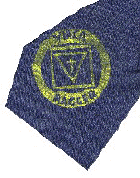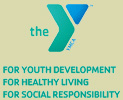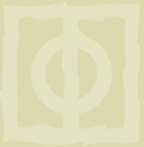"Ragger’s Creed”
I would be true, for there are those who trust me;
I would be pure, for there are those who care;
I would be strong, for there is much to suffer;
I would be brave, for there is much to dare.
I would be friend to all – the foe, the friendless;
I would be giving, and forget the gift;
I would be humble, for I know my weakness;
I would look up, and laugh, and love and lift.
It started off as a simple blue bandana, a blue kerchief that would signify excellence for health habits, promptness, cheerfulness, morals, trustworthiness, industry and helpfulness.I would be true, for there are those who trust me;
I would be pure, for there are those who care;
I would be strong, for there is much to suffer;
I would be brave, for there is much to dare.
I would be friend to all – the foe, the friendless;
I would be giving, and forget the gift;
I would be humble, for I know my weakness;
I would look up, and laugh, and love and lift.
In the spring of 1914, 25 of those blue bandanas were presented to youths at a YMCA summer camp near what is now Camp Loma Mar, a branch of the Alameda County, California YMCA, in the foothills of the Santa Cruz Mountains. It was here, about sixty miles south of San Francisco, that the tradition began.
Thomas Caldwell, then a 38-year-old boys’ secretary for the Oakland YMCA, used the kerchiefs for the first time and called them “rags.” This was to signify that in themselves the kerchiefs or bandanas had no value. Rather they were a symbol of the qualities a boy had demonstrated. It is estimated that since 1914 several hundred thousand youngsters in YMCA camps have been led blindfolded to a predetermined spot to have triangular kerchiefs tied around their necks in a simple ceremony.

Originally, the bandana was thought to be an award for “participation in activities.” After all, this followed the method being used at the time in the San Francisco YMCA camp and was based primarily on athletics. The idea was rejected because other camp leaders expected a crippled youngster to be in camp, and he would be unable to win the award under that system.
And it is at Raggers’ Point, a permanent fixture at YMCA camps around the world, that youngsters still receive the rag today. Usually built of rocks at remote and private view sites, they are rarely destroyed. One somewhat unusual site was a ceremony in Austria just a few yards from the Hungarian border. A group of touring high school students accepted the rag with communist armed guards viewing the ceremony through a barbed wire barricade.
The design of the rag blends four well-known shapes - the traditional YMCA triangle; the square-to signify the four-square life; the circle-a circle of friendship; and the cross-the symbol of Christianity.
While it was Thomas Caldwell who conceptualized the rag in 1914 (at first only boys received it), Ralph Cole, who was named California’s boys’ work secretary five years later, is regarded as the man who took the idea across state lines.
The Raggers program as it is applied here at Phantom incorporates the rich traditions and ceremonies of its history while fitting into our unique programs. Campers and staff participate in the very same ceremonies that have been handed down for decades. Thursday night after taps is blown, campers meet on the porch of Alford Lodge where a copy of their goals is placed in a self-addressed envelope and sealed for mailing as a December reminder of the personal challenges to be taken later that night. (a duplicate copy of their goals will be used in the ceremony itself.) Then its off to the kettles for a solemn and serious, yet encouraging time together. Where Phantom is unique when it comes to our Raggers program is the emphasis on personal participation. Of course the goals every Raggers candidate takes are ones tailored for and by the individual. No one aside from the author and anyone he or she decides to share them with will ever know what is written on that paper. In addition however, participation in the program itself is encouraged but is always left completely to the individual. Together with the Jr. Raggers program (a program similar to Raggers but tailored to campers age 9 to 11 emphasizing friendship, rounded growth, and strength of character) Phantom is able to provide an important yet voluntary avenue for individuals of all ages to increase in favor with God.
Things campers will need:
- two copies of their goals.
- a rock (palm-size) with their name on it for the evening’s ceremony.
- a blindfold that’s used on a trust walk
- We ask that each camper remains silent until the next morning except, of course, if there is an emergency.
- That each Ragger wears their rag the day after the ceremony and to the square ceremony on Friday.
| Rag | Challenge | Minimum Age |
| Blue | Loyalty to God, country and one's best self | 12 |
| Silver | Re-dedication to the Christian way of life and values | 13 |
| Brown | Service to others | 14 |
| Gold | Understanding, concern, and acceptance of others | 15 |
| Red | Sacrifice of time, talent, and personal will | 16 |
| Purple | To lead the best life possible | 18 |
| White | Life of full time Christian Service to Youth | 21 |
Jr. Raggers
Phantom’s rag program for campers under 12 years of age
This program is based on the YMCA’s national program called “Leathers” but we have adjusted it to relate to our version of the Raggers Program.
| Rag | Challenge | Minimum Age |
| Green (triangle) | Commitment to growth in Spirit, Mind, and Body | 8 |
| Tan (square) | Commitment to developing, making and keeping friends | 9 |
| Orange (circle) | To become closer to God through appreciation, love and concern for the Earth he created | 10 |
| Light Blue (symbol) | Review of their accomplishments after the three years | 11 |





